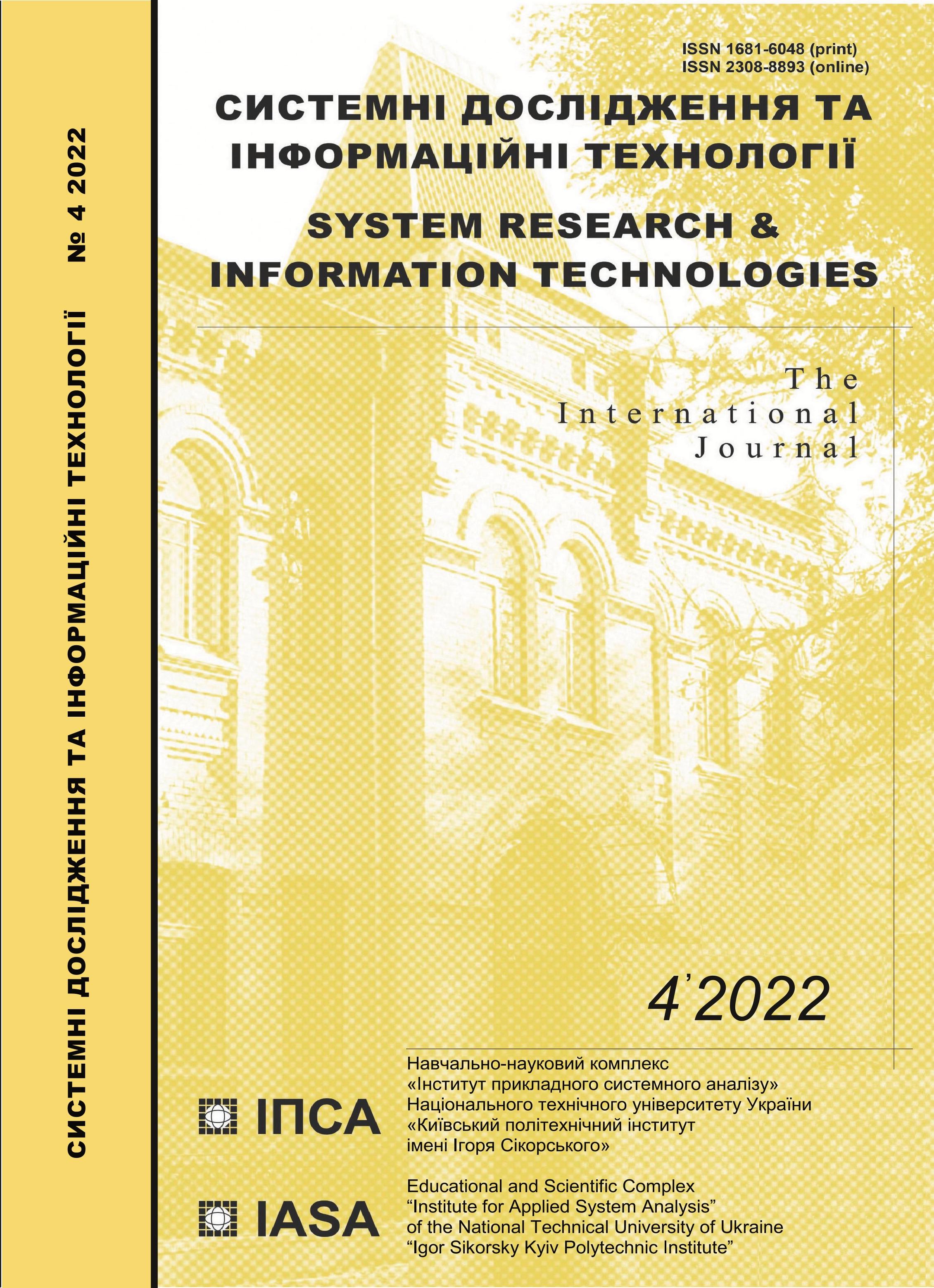1D CNN model for ECG diagnosis based on several classifiers
DOI:
https://doi.org/10.20535/SRIT.2308-8893.2022.4.01Keywords:
Electrocardiogram (ECG), Continuous wavelet transform (CWT), 1D convolutional neural network (CNN) modelAbstract
One of the main reasons for human death is diseases caused by the heart. Detecting heart diseases in the early stage can stop heart failure or any damage related to the heart muscle. One of the main signals that can be beneficial in the diagnosis of diseases of the heart is the electrocardiogram (ECG). This paper concentrates on the diagnosis of four types of ECG records such as myocardial infarction (MYC), normal (N), variances in the ST-segment (ST), and supraventricular arrhythmia (SV). The methodology captures the data from six main datasets, and then the ECG records are filtered using a pre-processing chain. Afterward, a proposed 1D CNN model is applied to extract features from the ECG records. Then, two different classifiers are applied to test the extracted features’ performance and obtain a robust diagnosis accuracy. The two classifiers are the softmax and random forest (RF) classifiers. An experiment is applied to diagnose the four types of ECG records. Finally, the highest performance was achieved using the RF classifier, reaching an accuracy of 98.3%. The comparison with other related works showed that the proposed methodology could be applied as a medical application for the early detection of heart diseases.
References
World Health Organization, Cardiovascular Diseases (CVDs). 2022. [Online]. Available: http://www.who.int/mediacentre/factsheets/fs317/en/
S.K. Berkaya, A.K. Uysal, E.S. Gunal, S. Ergin, S. Gunal, and M.B. Gulmezoglu, “A survey on ECG analysis,” Biomed Signal Process Control, 43, pp. 216–235, 2018.
O. Faust, Y. Hagiwara, T.J. Hong, O.S. Lih, and U.R. Acharya, “Deep learning for healthcare applications based on physiological signals: A review,” Biomed. Comput. Meth. Prog. Bio., 161, pp. 1–13, 2018.
L.A. Abdullah and M.S. Al-Ani, “CNN-LSTM based model for ECG arrhythmias and myocardial infarction classification,” Adv. Sci. Technol. Eng. Syst., 5(5), pp. 601–606, 2020.
E. Butun, O. Yildirim, M. Talo, R.S. Tan, and U.R. Acharya, “1D-CADCapsNet: One dimensional deep capsule networks for coronary artery disease detection using ECG signals,” Physica Medica, 70, pp. 39–48, 2020.
X. Hua et al., “A novel method for ECG signal classification via one-dimensional convolutional neural network,” Multimedia Systems, pp. 1–13, 2020.
G. Petmezas et al., “Automated atrial fibrillation detection using a hybrid CNN-LSTM network on imbalanced ECG datasets,” Biomedical Signal Processing and Control, 63, 102194, 2021.
MIT-BIH Normal Sinus Rhythm. [Online]. Available: https://www.physionet.org/content/nsrdb/1.0.0/ last accessed 2-10-2021.
Normal Sinus Rhythm RR Interval. [Online]. Available: https://physionet.org/content/nsr2db/1.0.0/ last accessed 2-10-2021.
MIT-BIH Supraventricular Arrhythmia. [Online]. Available: https://physionet.org/content/svdb/1.0.0/ last accessed 2-10-2021.
MIT-BIH ST Change Database. [Online]. Available: https://physionet.org/content/stdb/1.0.0/last accessed 2-10-2021.
Long Term ST Database. [Online]. Available: https://physionet.org/content/ltstdb/1.0.0/ last accessed 2-10-2021.
PTB Diagnostic ECG Database. [Online]. Available: https://www.physionet.org/content/ptbdb/1.0.0/ last accessed 2-10-2021.
M.M. Bassiouni, E.S.A. El-Dahshan, W. Khalefa, and A.M. Salem, “Intelligent hybrid approaches for human ECG signals identification,” Signal Image Video Process, 12(5), pp. 941–949, 2018.
M. Bassiouni, W. Khaleefa, E.A. El-Dahshan, and A.B.M Salem, “A machine learning technique for person identification using ECG signals,” Int. J. Appl. Phys., 1, pp. 37–41, 2016.
M.M. Bassiouni, I. Hegazy, N. Rizk, S.A. El-Dahshan, and A.M. Salem, “Combination of ECG and PPG Signals for Healthcare Applications: A Survey”, Advances in Modelling and Analysis, 64(1-4), pp. 63–70, 2021.
M.M. Bassiouni, I. Hegazy, N. Rizk, E.S.A. El-Dahshan, and A.M. Salem, “Automated Detection of COVID-19 Using Deep Learning Approaches with Paper-Based ECG Reports,” Circuits, Systems, and Signal Processing, 41, pp. 1–43,2022.
A.F. Agarap, “Deep learning using rectified linear units (relu),” arXiv preprint, arXiv:1803.08375, 2018.
A.T. Azar, H.I. Elshazly, A.E. Hassanien, and A.M. Elkorany, “A random forest classifier for lymph diseases,” Comput. Biol. Med., 113(2), pp. 465–473, 2014.
S.Y. El-Bakry, E.S. El-Dahshan, and M.Y. El-Bakry, “Total cross section prediction of the collisions of positrons and electrons with alkali atoms using Gradient Tree Boosting,” Indian J. Phys., 85(9), pp. 1405–1415, 2011.
H.T. Weldegebriel, H. Liu, A.U. Haq, E. Bugingo, and D. Zhang, “A new hybrid convolutional neural network and eXtreme gradient boosting classifier for recognizing handwritten Ethiopian characters,” IEEE Access, 8, pp.17804–17818, 2019.
S. García, A. Fernández, J. Luengo, and F. Herrera, “A study of statistical techniques and performance measures for genetics-based machine learning: accuracy and interpretability,” Soft Comput., 13(10), 959, 2009.
S.N. Yu and M.Y. Lee, “Bispectral analysis and genetic algorithm for congestive heart failure recognition based on heart rate variability,” Comput. Biol. Med., 42(8), pp. 816–825, 2012.
K.H. Boon, M. Khalil-Hani, and M.B. Malarvili, “Paroxysmal atrial fibrillation prediction based on HRV analysis and non-dominated sorting genetic algorithm,” Comput. Biol. Med., 153, pp. 171–184, 2018.
H.B. Bae, M.S. Park, R.M. Kil, and H.Y. Youn, “Classifying heart conditions based on class probability output networks,” Neurocomputing, 360, pp. 198–208, 2019.
R.R. Janghel and S.K. Pandey, “A Classification of ECG Arrhythmia Analysis Based on Performance Factors Using Machine Learning Approach,” in Computational Network Application Tools for Performance Management. Springer, Singapore, 2020, pp. 65–74.
M.M. Bassiouni, I. Hegazy, N. Rizk, E.S.A. El-Dahshan, and A.M. Salem, “Deep learning approach based on transfer learning with different classifiers for ECG diagnosis,” International Journal of Intelligent Computing and Information Sciences, 22(2), pp.44–62, 2022.

